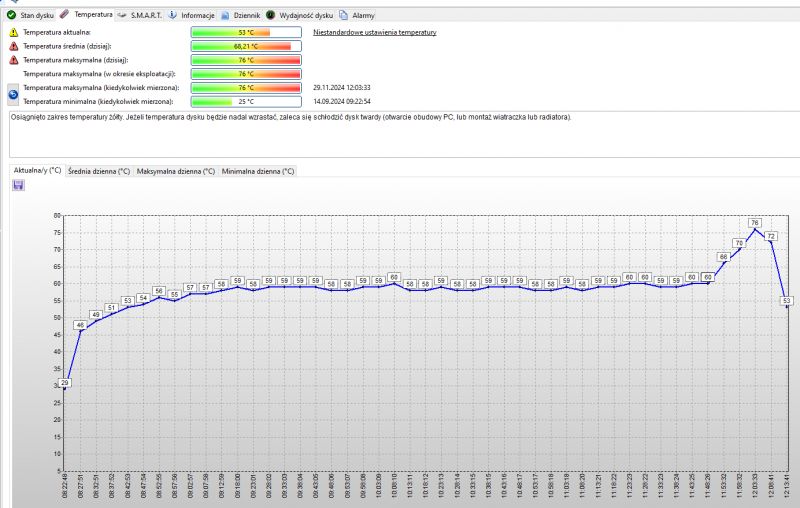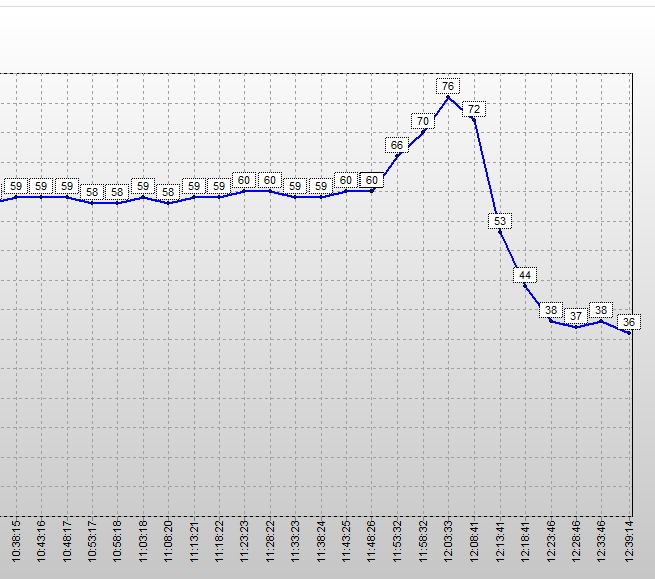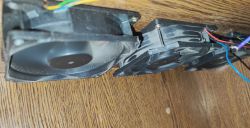 .
.
Today I'm testing whether a custom cooling pad for a laptop can lower its temperatures. Actually it will be a table conversion, so more of a "cooling table". Measurements will be taken on the CPU and on the SSD. I will show the whole thing on the graphs - I will contrast the operation without the pad and with the pad in two modes (quiet and strongest).
I made the cradle by placing three computer fans in holes made in an old table. Initially, I also wanted to make the laptop a 'seat' to lift it slightly, but in the end I decided to do things differently - I took the liberty of removing the bottom cover of the laptop so that the drives, RAM and part of the heatsink were exposed:
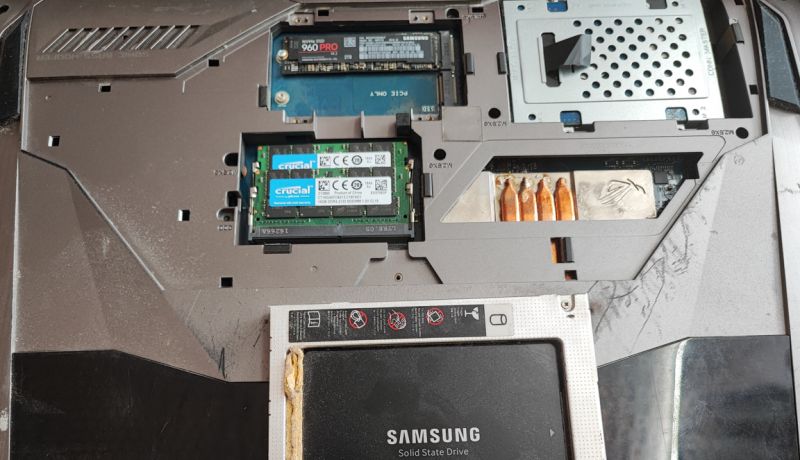 .
.
The laptop itself is a 17-inch, even desktop giant these days with an Intel Core i7-6700HQ, GeForce GTX 1060 and 64GB RAM. This oldie can even run big language models and even generate images with Stable Diffusion!
For the record, I'll add that this is now a 'workshop' laptop and doesn't require mobility. The table similarly - it comes from a junkyard.
As for the details of the build of the stand, there's nothing to brag about as I've simply mounted the fans under the table - I'll provide one photo:
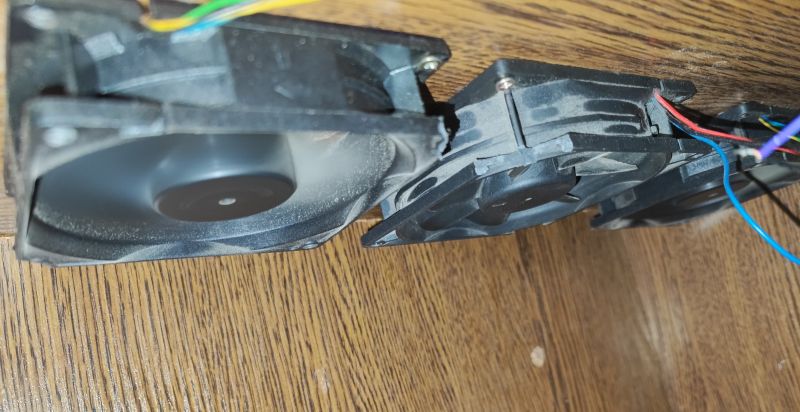 .
.
This is during testing, normally 3 fans are running.
So it is time for testing....
Tests during normal operation .
I initially tried testing at artificial 100% load on everything, with no interruptions, but unfortunately I was unable to reliably observe an improvement. I thought I had failed completely - but still not. What matters is how much the coaster helps in practice, not how much it helps in a theoretical, artificially created situation.
And in practice it is like this, I'll start with the noise levels:
- at around 50% power (by eye) the fan noise level is acceptable
- at full power the fans are quite noisy, but you can get used to it - just play something on Youtube, etc, maybe some some cool podcast , and you can survive
However, we are more curious about the temperatures.
So let's have a look - sorry for the wrong order - the graph below is the transition from 50% blowing to 100% :
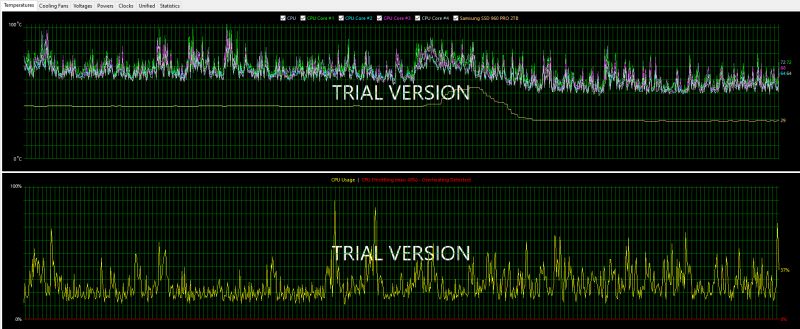 .
.
Pardon the moment with the blowing turned off.
That is, at 50% blowing the SSD was about 40 degrees, and at 100% it dropped to 30. The CPU cores at 100% blowing oscillate around 62-72 degrees, and at 50% it was about 10 degrees more (72-82).
Below the second graph - going from 100% blowing to 0% :
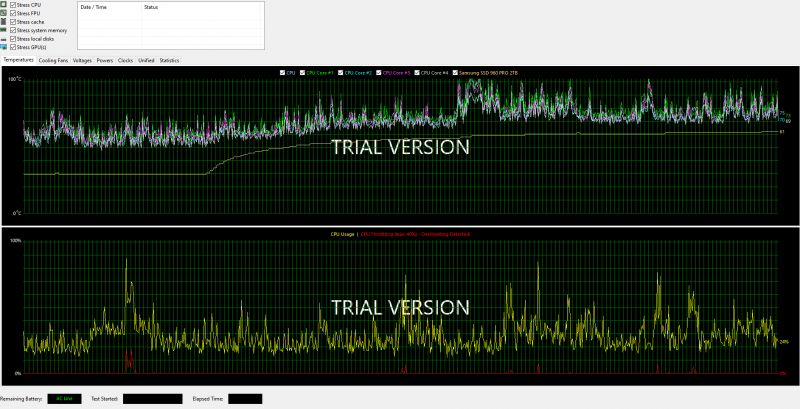 .
.
Above, you can see that without my stand, the SSD heats up to 61 degrees and the CPU oscillates around 70-80 degrees, reaching higher temperatures over time.
Below the same graph after some time:
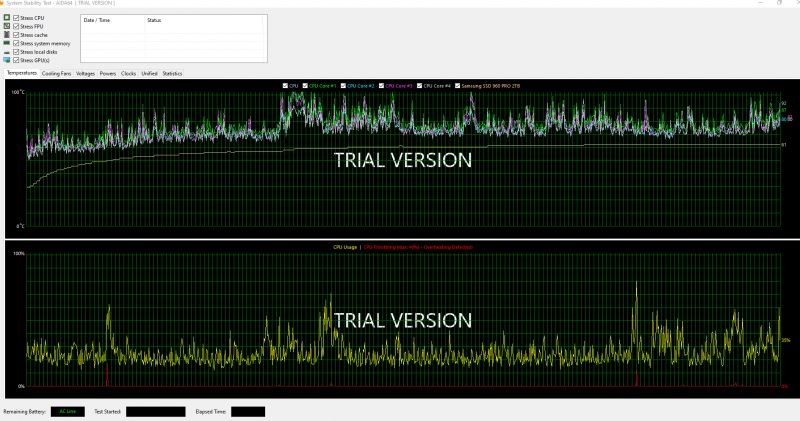 .
.
Above you can see that the temperature is still rising, with the cores reaching 80-92 degrees.
Ok, I turn it back on to full cooling, see below: .
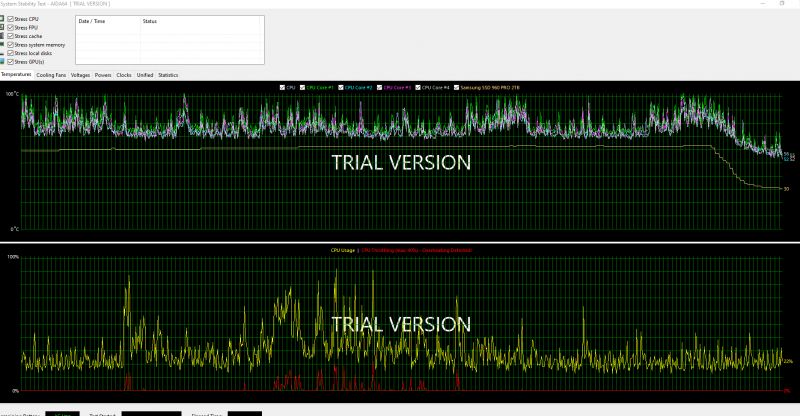
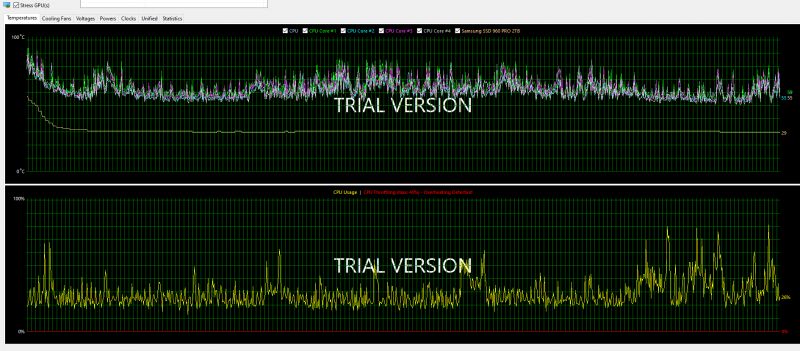 .
.
SSD is down to 30 degrees, cores are at about 50-60. not bad!
Interesting fact 1 .
While working hard under load, one of my SSDs, a Samsung 960 PRO 2TB suddenly started showing a health of 50% instead of 90%. At first I didn't know where it was coming from, but then it went back to 90%. After some more experimentation I realised that it shows 50% when it overheats - i.e. its temperature changes the health reading....
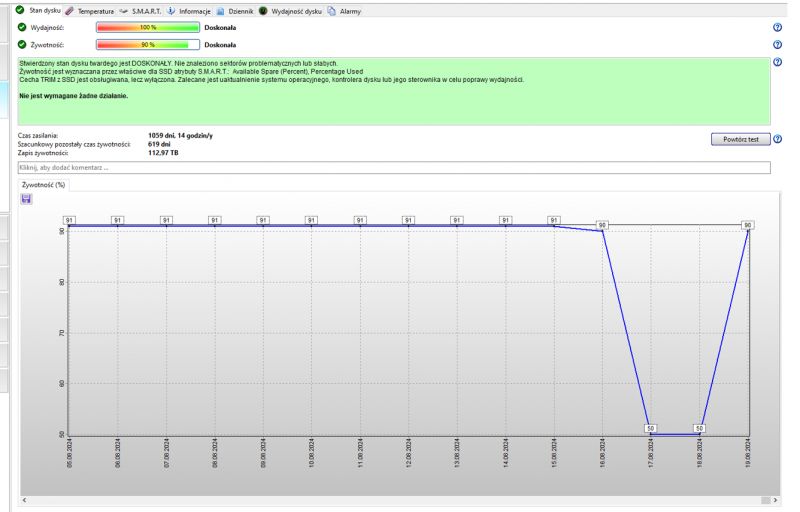
Interesting fact 2 .
I used AIDA to monitor the temperatures, and this program gave me one surprise - after 5 hours of testing I suddenly started running out of RAM, and the task manager showed that AIDA was taking up over 40GB.... I momentarily aborted its process, and took this snapshot as a reminder:
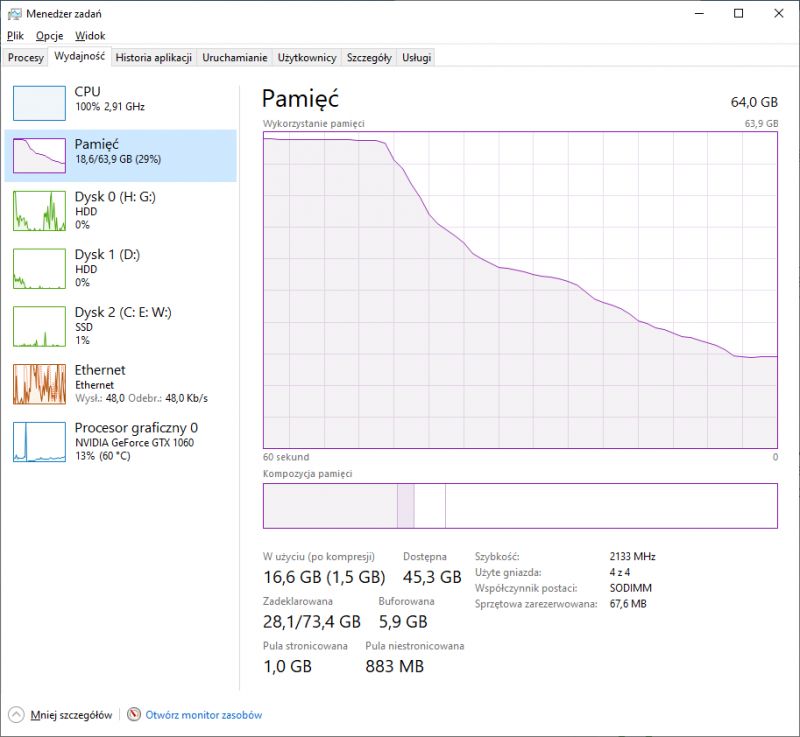 .
.
Summary .
What can I write here? I guess I'll start by saying that a cooling pad should not be a substitute for interior maintenance, dust removal, correct paste replacement and thermopads. And besides.
I don't know how much my invention compares to what you can buy, plus I cheated a bit (took off the bottom lid of the laptop), but overall I'm satisfied. It was supposed to be just art for art's sake, and yet my little workstation was helped by it.
As I wrote, everything was tested under practical conditions and in practice it helps, including my SSD, and I guess it would be better for the SSD to work at 30 rather than 60 degrees?
It's also quite possible that the whole thing could be optimised, e.g. maybe raising the laptop slightly by 1 cm so that the air blows all over it? Do you think this would help? Or do you have other suggestions? I am open to ideas.
Do you use laptop cooling stands? Feel free to discuss.
Cool? Ranking DIY Helpful post? Buy me a coffee.







